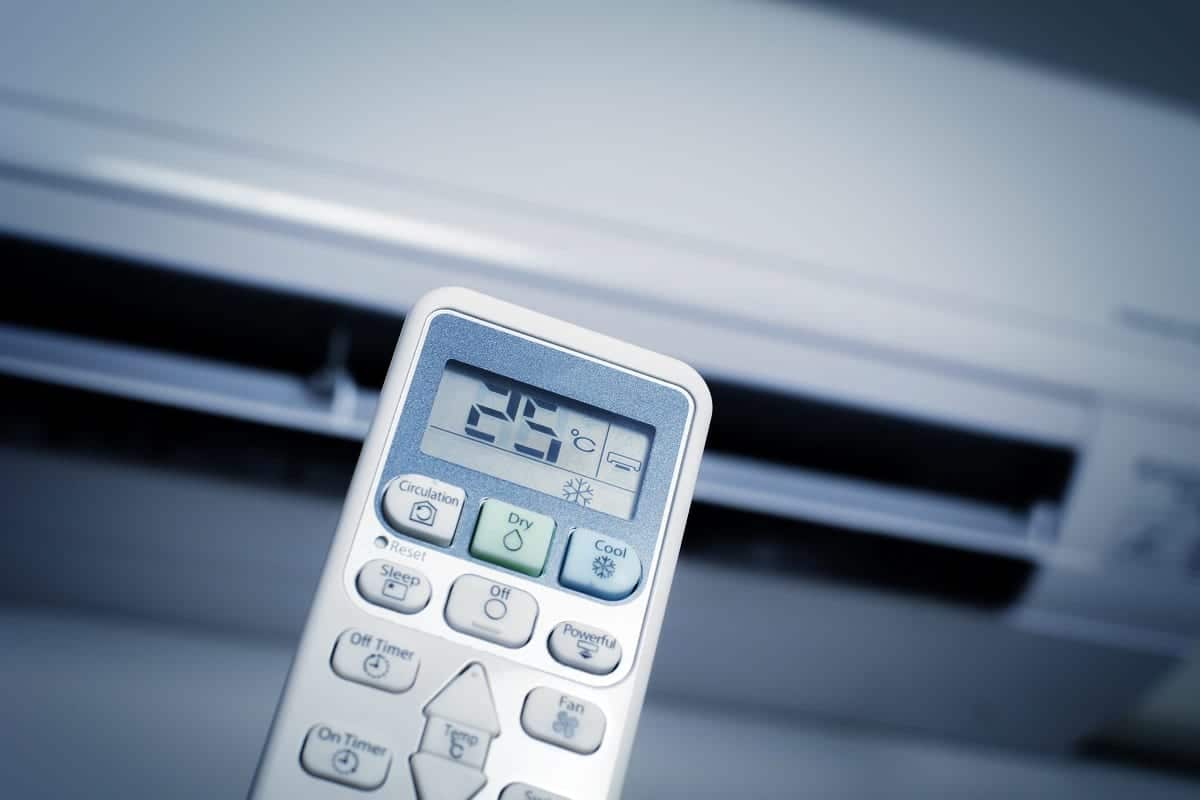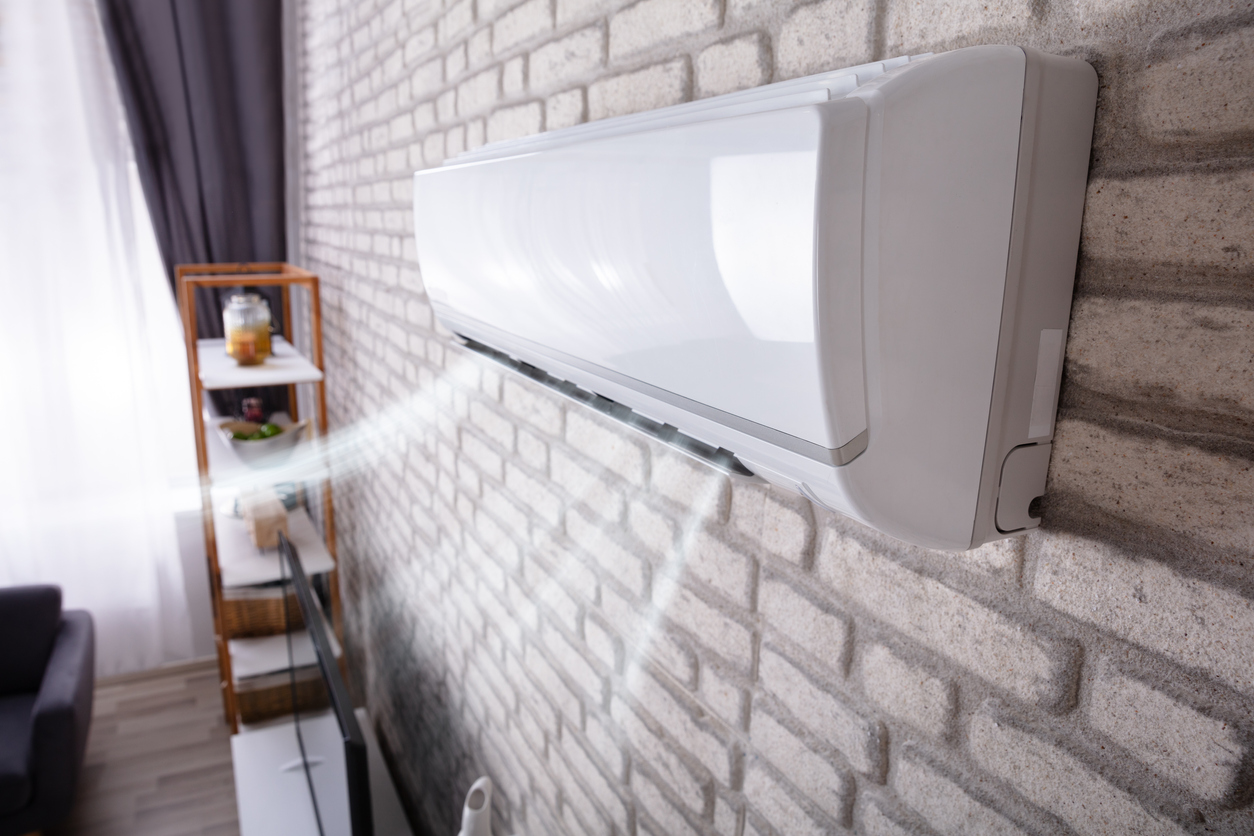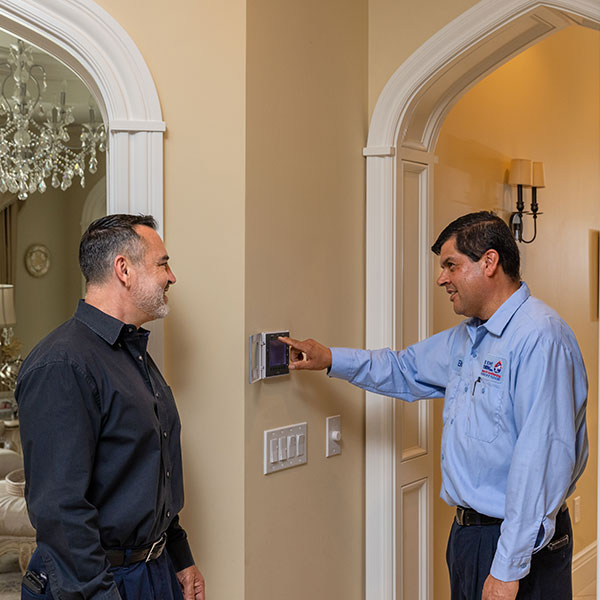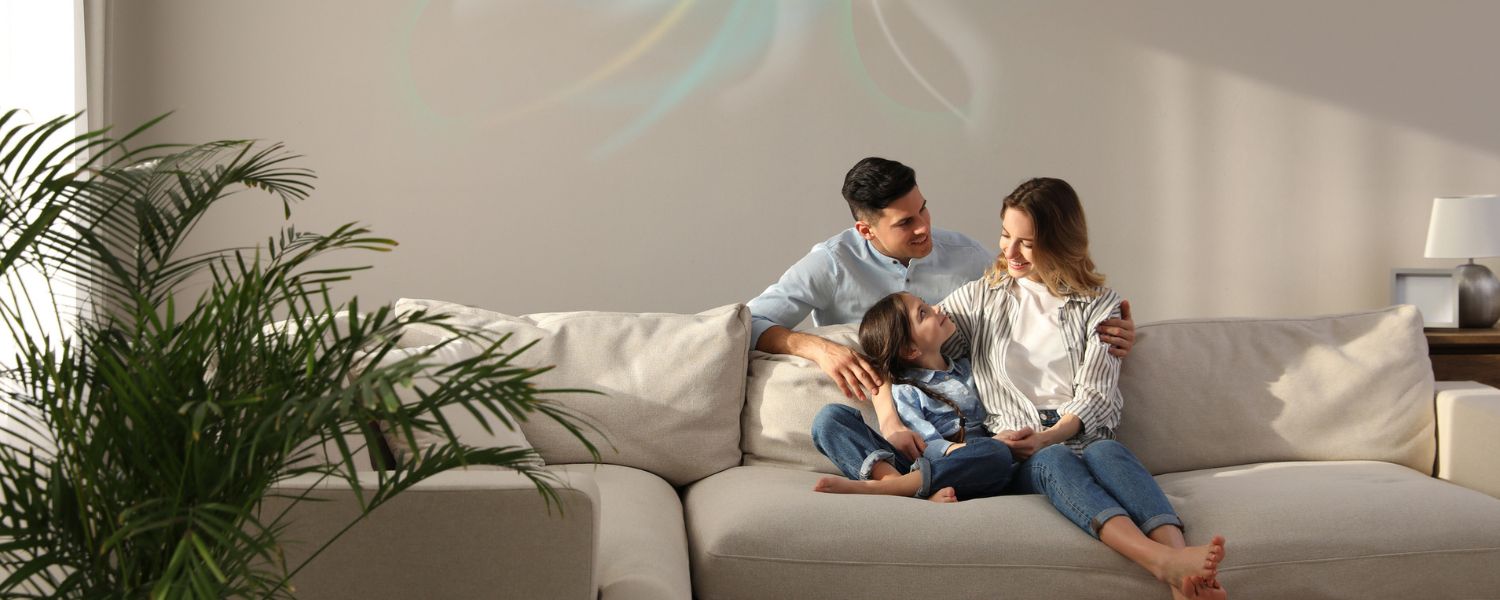San Diego may be known for its pleasant year-round weather, but temperatures can rise quickly in the summer. And once temperatures rise, your home feels anything but pleasant. Sure, you can find some relief at your local beaches or take a dip in a swimming pool. But you can’t spend all day there; sometimes you just want to relax inside your home.
An air conditioner is vital when it’s hot outside and you want to stay comfortable indoors. But with so many types of air conditioners available, finding the best one for your home can feel overwhelming. After all, it’s one of those must-have appliances that can take up a big chunk of your budget. Selecting the right one is essential. We’re here to help.
How to Choose an Air Conditioning System
There are many factors to consider when choosing a new air conditioning system or upgrading an existing one. Through decades of experience with installations, repairs, and working with manufacturers, we have identified the key factors to consider when buying an AC unit. In this blog, we will cover the types of AC Units, the importance of energy efficiency, and physical and structural limitations your home may have that will all affect the system you choose. We hope that with the information provided, you can make an informed decision when it’s time to purchase a new air conditioning system.
What Type Of AC Unit Is Best For Your Home?
The two most common types of air conditioners for a home are central AC systems and ductless mini split systems. But there are several other types of AC units to cool the rooms in your home. We’ll discuss the types of air conditioners and the pros and cons of each type of AC unit.
Central Air Conditioning Systems
Central air conditioning is a whole-home cooling system operating from a single central location. These systems are made up of two units: an indoor and outdoor component. Typically placed in a garage, closet, or attic, the indoor unit uses Freon, an evaporator filled with refrigerant, to remove the heat from your home. The refrigerant absorbs warm air, releases it through the outdoor unit, and returns inside to repeat the cycle.
Central air conditioners use ducts and vents located in your walls to move air to and from its central location. A motorized fan pulls air from your home and cycles it through the system where it is cooled. The cooled air is then pumped back through the ducts to the rest of the home. While these types of AC units can be costly, they provide unparalleled cooling and dehumidifying capabilities, as well as air cleaning for large spaces. Some units feature smart capabilities, so you can easily adjust the temperature and set cooling cycles, which makes them one of the best air conditioning systems for many homes.
If you’re unsure of what type of unit your home can accommodate, we’re ready to help and you can schedule a free estimate with our experts.
Pros:
- Efficiently cools the entire home through existing duct systems.
- Temperature control via a thermostat.
- Quieter indoor operation.
Cons:
- High initial purchase and installation costs.
- May not be aesthetically pleasing.
Ductless Mini Split Systems
A home lacking an extensive duct system to carry cool air through the house may not be suitable for a central AC unit. The alternative to installing an extensive duct system is a ductless mini-split system. Mini splits are smaller air conditioning systems that are installed to control the temperature of an individual room or area. Much like central air, mini splits are made of an indoor and outdoor unit. However, with this system there can be numerous indoor units throughout the home.
Did you add a room addition or a guest room after the initial HVAC system was installed? A mini split system is a great option to cool those rooms. Mini splits can be installed in several rooms to serve as a main source of home comfort control or as a complement to central air cooling rooms where ductwork cannot reach.
A mini split has a wall mounted unit containing an air handler that internally cools the air. When air enters the wall unit, the refrigerant absorbs the heat and transfers the warm air to the outdoor unit. The cooled refrigerant returns to the inside unit to release the cooled air, and the cycle starts again.
Pros:
- Individual room temperature control.
- No floor space required.
Cons:
- Not suitable for cooling an entire home or large rooms.
Window Air Conditioners
If you’re looking for a new air conditioning system but don’t have a large budget, a window air conditioner may be right for you. These types of air conditioners are smaller in size and cost. And just as the name implies, these types of AC units are designed to fit and sit in a window. They’re a great option for anyone living in an apartment or condo lacking a central AC system. However, they can pose a hazard if they are not installed correctly.
Pros:
- Affordable initial cost.
- Easy to install.
- Doesn’t take up any floor space.
Cons:
- Blocks the window.
- Can be noisy.
- May pose a potential safety hazard if not installed correctly.
Floor-mounted Air Conditioners
Also called through-the-wall air conditioners, these types of air conditioners sit near or on the floor. They’re like mini-split systems because they don’t rely on air ducts. And since they’re low to the ground, they’re easy to access. They’re mounted low, so they’re also a good option to cool a room with high ceilings.
Pros:
- Easy to install and access, ideal for older individuals.
- Cools rooms quickly due to low placement.
- They don’t take up much space in a room.
Cons:
- Cools rooms unevenly.
- Furniture or other obstacles in the room can hinder airflow.
- Takes up a significant amount of wall space.
Portable Air Conditioner
Suppose you’re living in an apartment or condo without central AC and cannot install a window AC. In that case, a portable air conditioner is a good alternative. They’re relatively inexpensive and don’t have the same hazards as a window AC unit. All you have to do is place it near a window and an available electrical outlet. These types of air conditioners use an exhaust hose that goes from the unit to the window. The hose vents the heat outdoors while the unit’s built-in fan blows cool air into the space.
Pros:
- Cost-effective.
- Easy to set up.
Cons:
- Noisy operation.
- Takes up floor space.
Maximizing System Efficiency
Seasonal Energy Efficiency Ratio (SEER)
The SEER calculates how effectively your system cools your home in coordination with the outdoor temperature. This rating is measured by dividing the annual cooling output by the total electrical input. Modern systems’ SEER rating ranges from 13-21 but older systems are usually lower. Many factors affect your SEER rating such as outdoor temperatures, your home’s surrounding buildings, sun exposure, and system maintenance. A low rating does not necessarily mean you need to replace the entire system. Specific parts can be switched out to retain efficiency. Most manufacturers support equipment and replacement parts for the lifespan of the system, which is 15-20 years. However, a higher SEER rating means your system is more efficient. Better efficiency can help lower your electric bill and save you money.
Choosing Air Conditioner Size
Selecting the appropriate air conditioner size is critical for efficiency. The square footage of the desired room determines the British Thermal Units (BTUs) required. BTUs measure the power needed to cool a room, with higher BTU numbers indicating more power.
BTU Selection Chart by Room Size
| Room Area to be Cooled | Capacity Needed |
|---|---|
| Up to 350 sq. ft. | 8,000 BTU |
| 350 to 400 sq. ft. | 9,000 BTU |
| 400 to 450 sq. ft. | 10,000 BTU |
| 450 to 550 sq. ft. | 12,000 BTU |
| 550 to 700 sq. ft. | 14,000 BTU |
Upgrading Your Central Air Conditioner
Settling for an air conditioning system that doesn’t meet your needs can leave you uncomfortable. Modern air conditioning systems are considerably more efficient, using 30-50% less energy than those from the 1970s and 20-40% less than models from just a decade ago.
Adjusting the system’s size and power has many advantages. Systems that are too strong won’t remove humidity efficiently, while systems that are too weak won’t control the indoor environment accurately. Factors like unit size, insulation, ductwork, and system location are crucial for efficiency.
There are more features to air conditioning systems than you may think. The following are extra features worth consideration.
- Installing a quiet unit to reduce white noise. Where your system is located, noise can disrupt your home comfort.
- Fan-only switches. This feature gives you the ability to use the fan without running the entire system. This will help reduce costs if you want to run your system at night.
- A light indicating routine maintenance reminders like changing the filters– helping you maintain an efficient unit. Note: Annual HVAC Tune-Ups are highly recommended. Routine AC maintenance has many benefits, including prolonging the life of your system, ensuring that it runs efficiently, and guaranteeing great air quality.
- Thermal expansion valve for those who live in high-temperature areas (often exceeding 95 degrees). The valve increases efficiency when the outside temperature reaches these extreme highs.
Selecting the Right Type of Air Conditioner for Your Home
Purchasing a new air conditioning system is a big step in improving the comfort of your home. There are specific factors to consider when learning how to choose an air conditioner that best suits your needs.
Consider the following before purchasing a new air conditioning system:
- Budget: Determine how much you’re willing to spend.
- Space: Evaluate the available space for the air conditioner.
- Energy Efficiency: Check the system’s energy efficiency ratings.
- Maintenance: Consider the maintenance requirements of the system.
Making The Choice
Selecting the perfect air conditioning system for your home is a personalized decision based on various factors, including your home’s size, budget, and existing infrastructure. Here’s a quick recap to help you decide:
- Central air systems are efficient for whole-home cooling and centralized temperature control.
- Ductless mini splits offer precise control for individual rooms and complement central air in areas with no ductwork.
- Portable, floor-mounted, and window AC units are cost-effective but suitable for cooling single rooms.
- Efficiency matters, so always check the SEER rating of your system and ensure the right size for your space.
- Upgrades can enhance your comfort, so consider additional features and optimal sizing for an improved experience.
Ready to make your home the epitome of comfort? Let our experts at Bill Howe guide you to the perfect air conditioning solution for your needs. We understand the importance of a comfortable home, and that’s why we offer free estimates. Contact us today for a comprehensive assessment and personalized recommendations that align with your home’s unique requirements and budget. Your comfort is just a call away!




